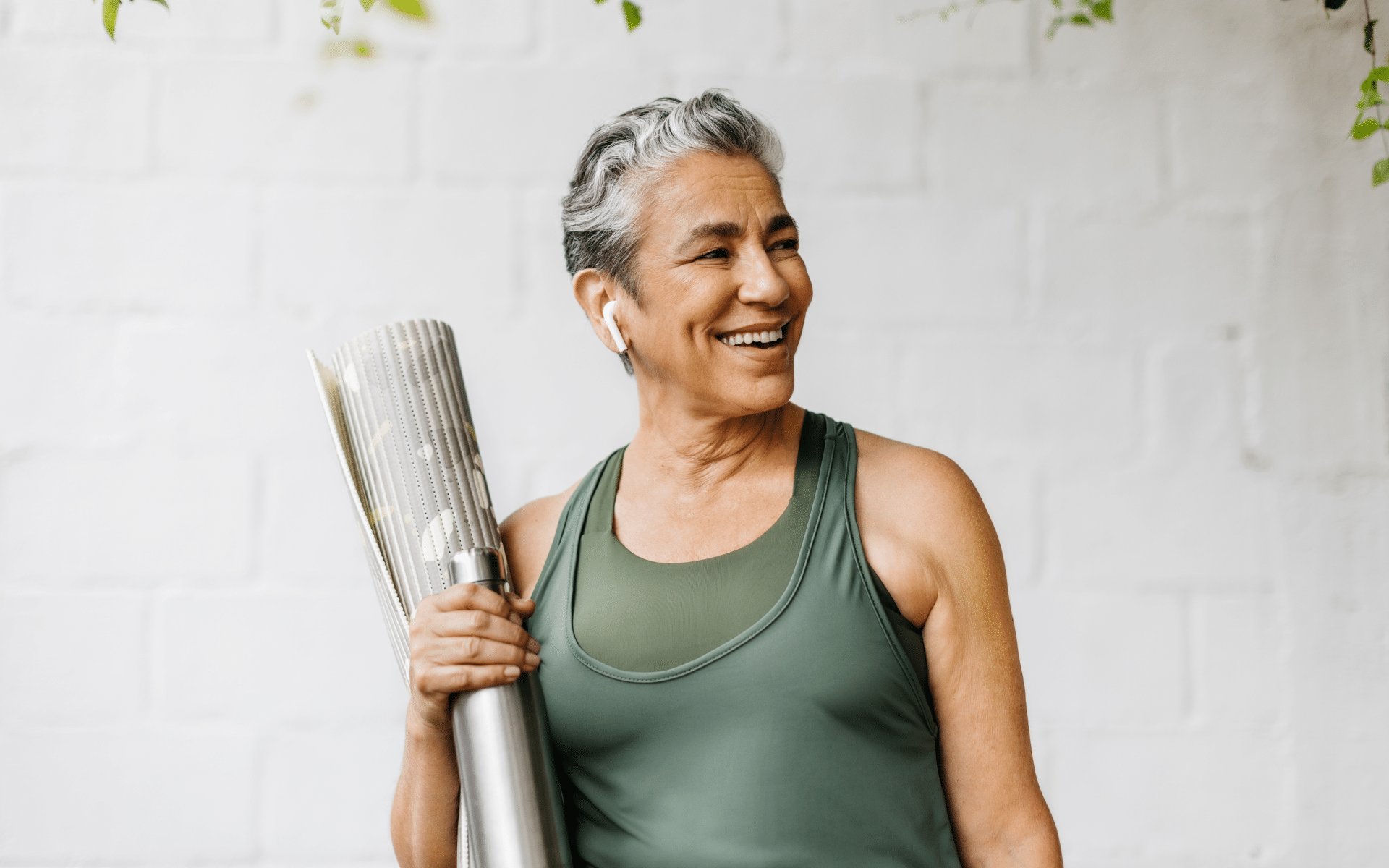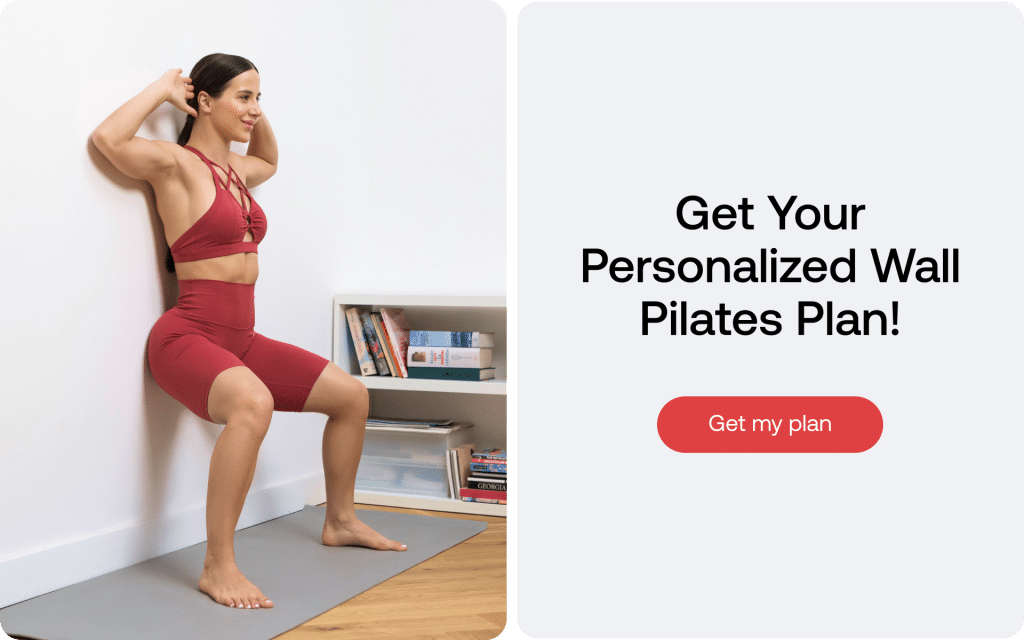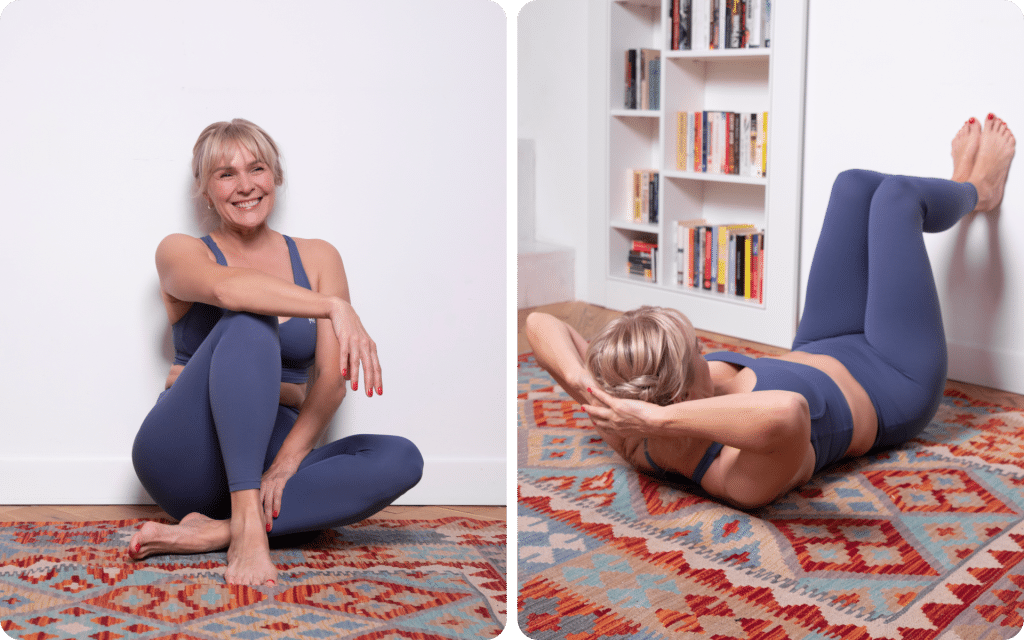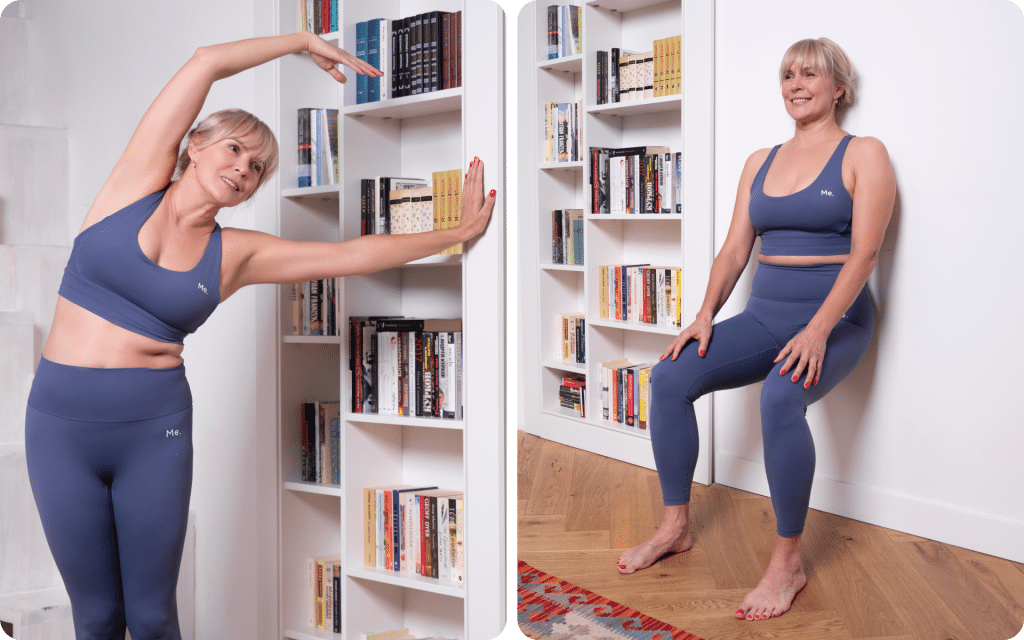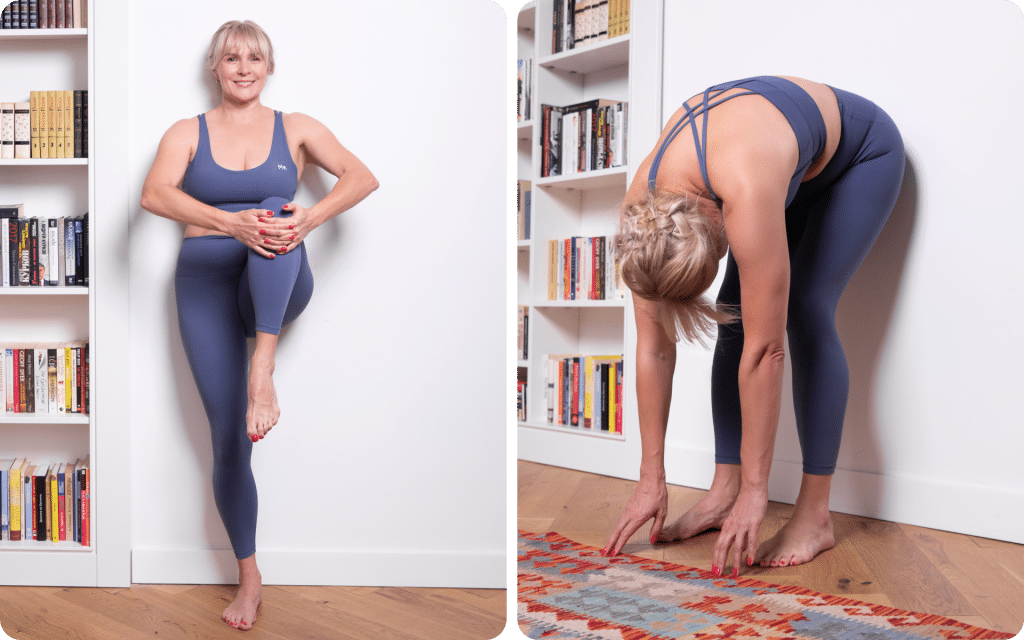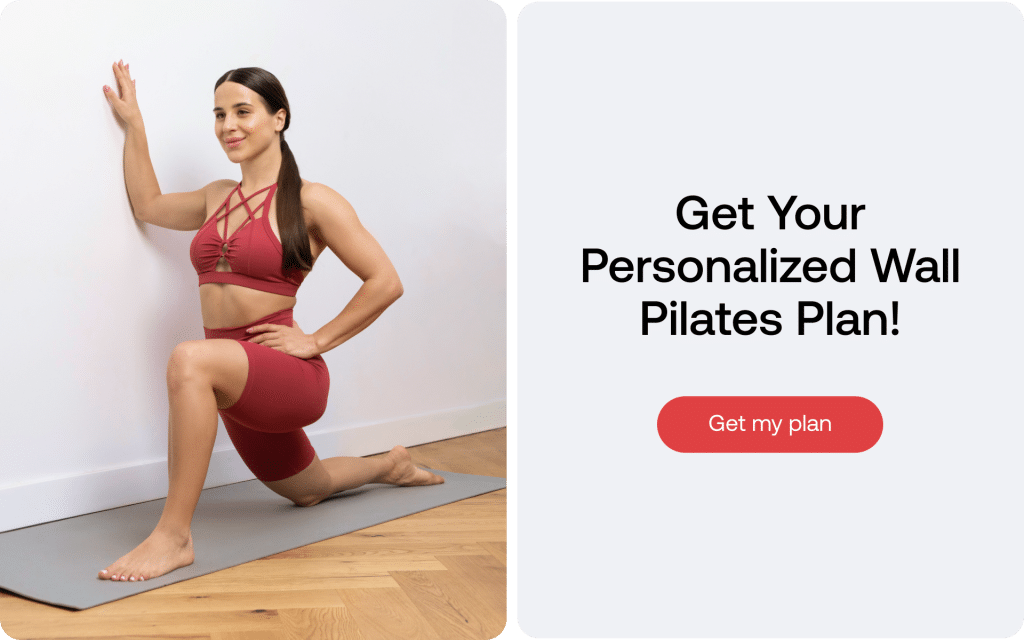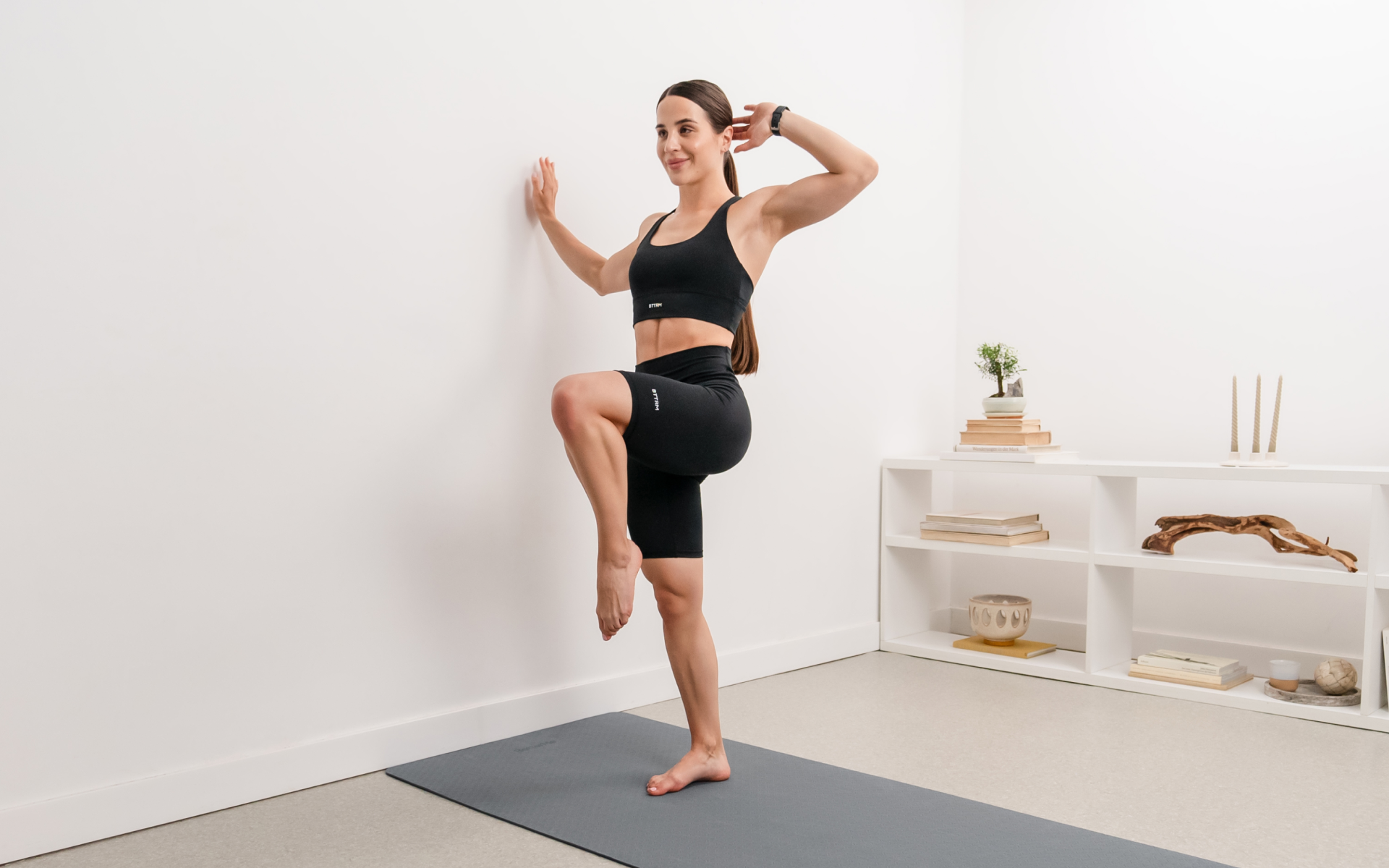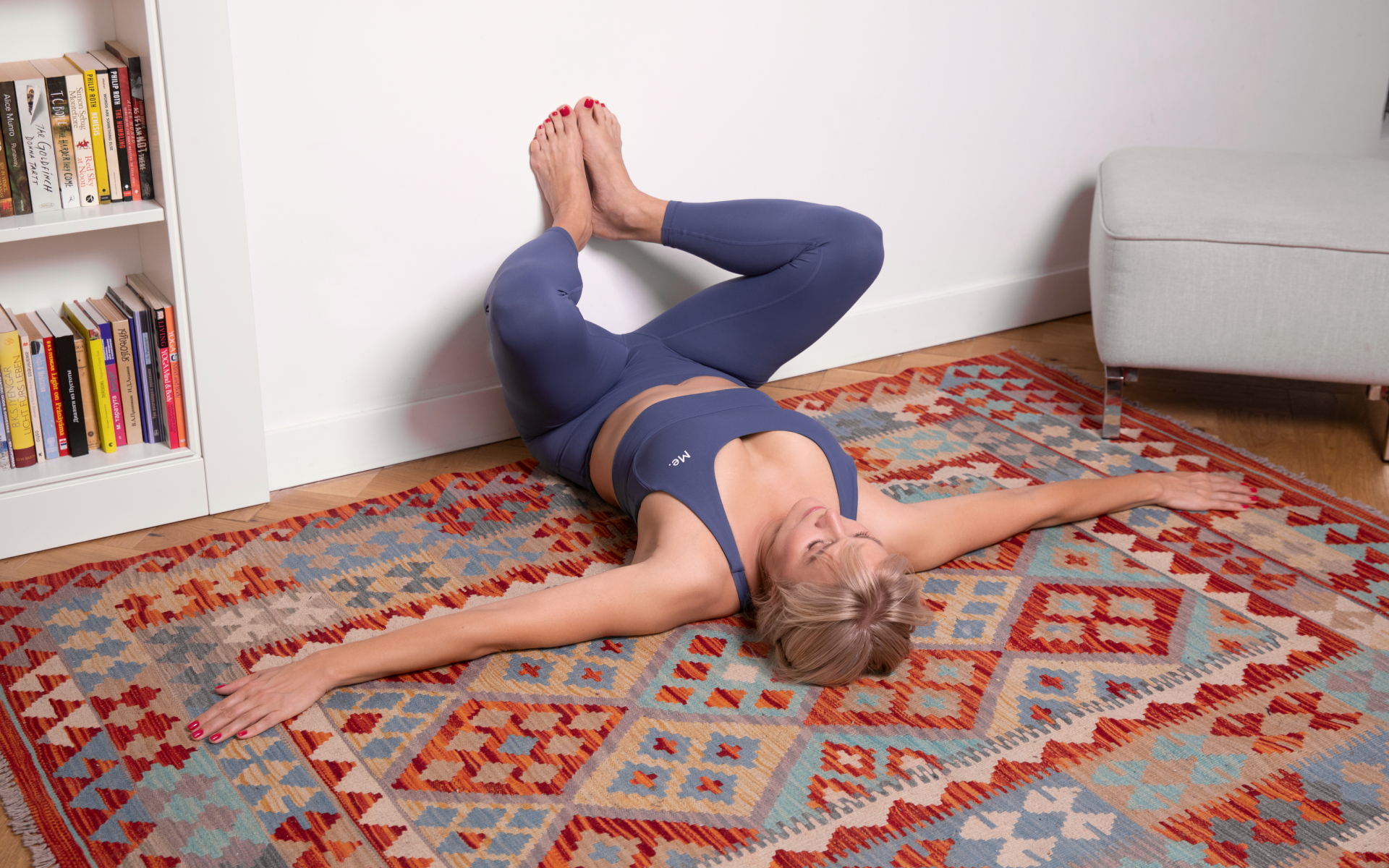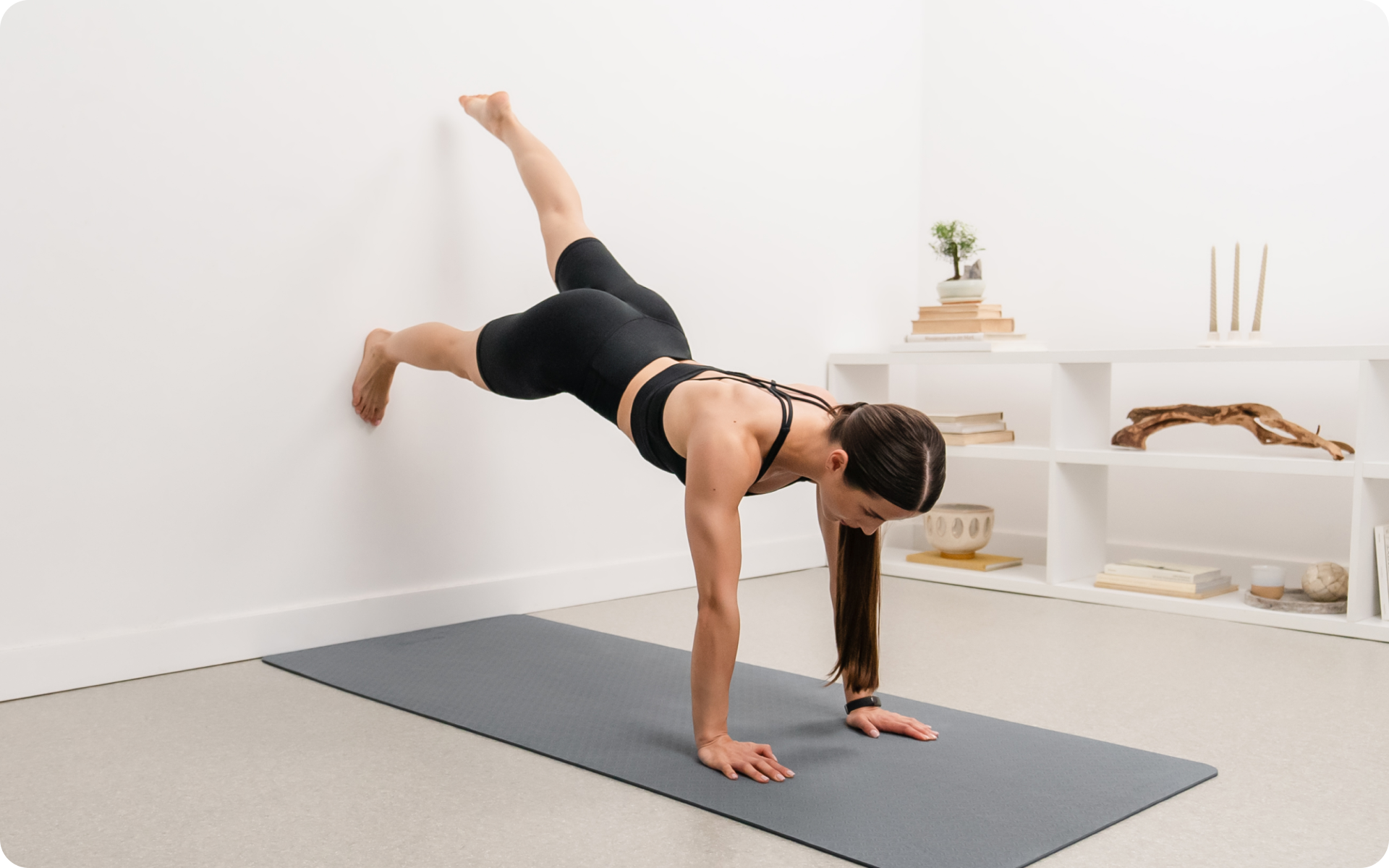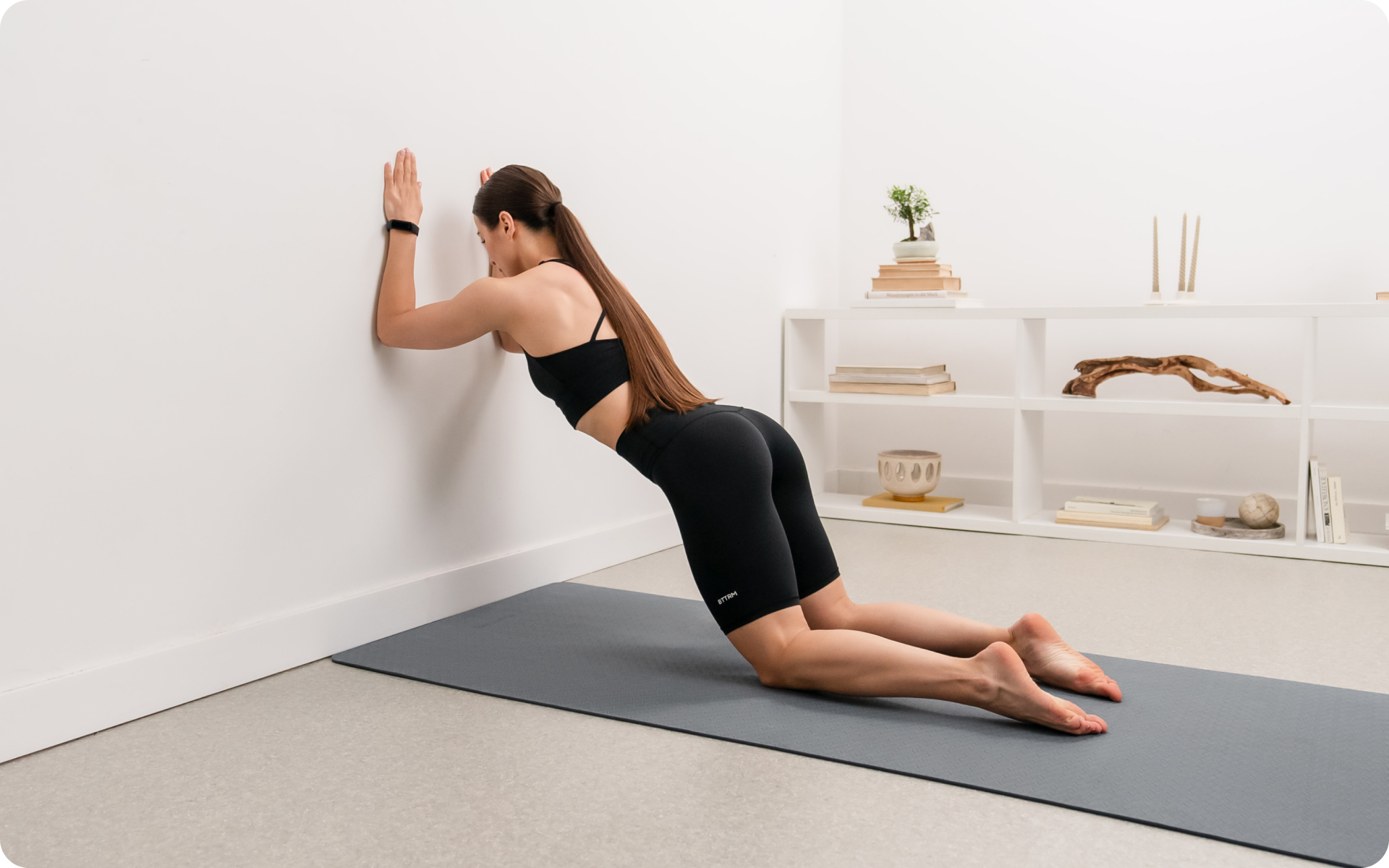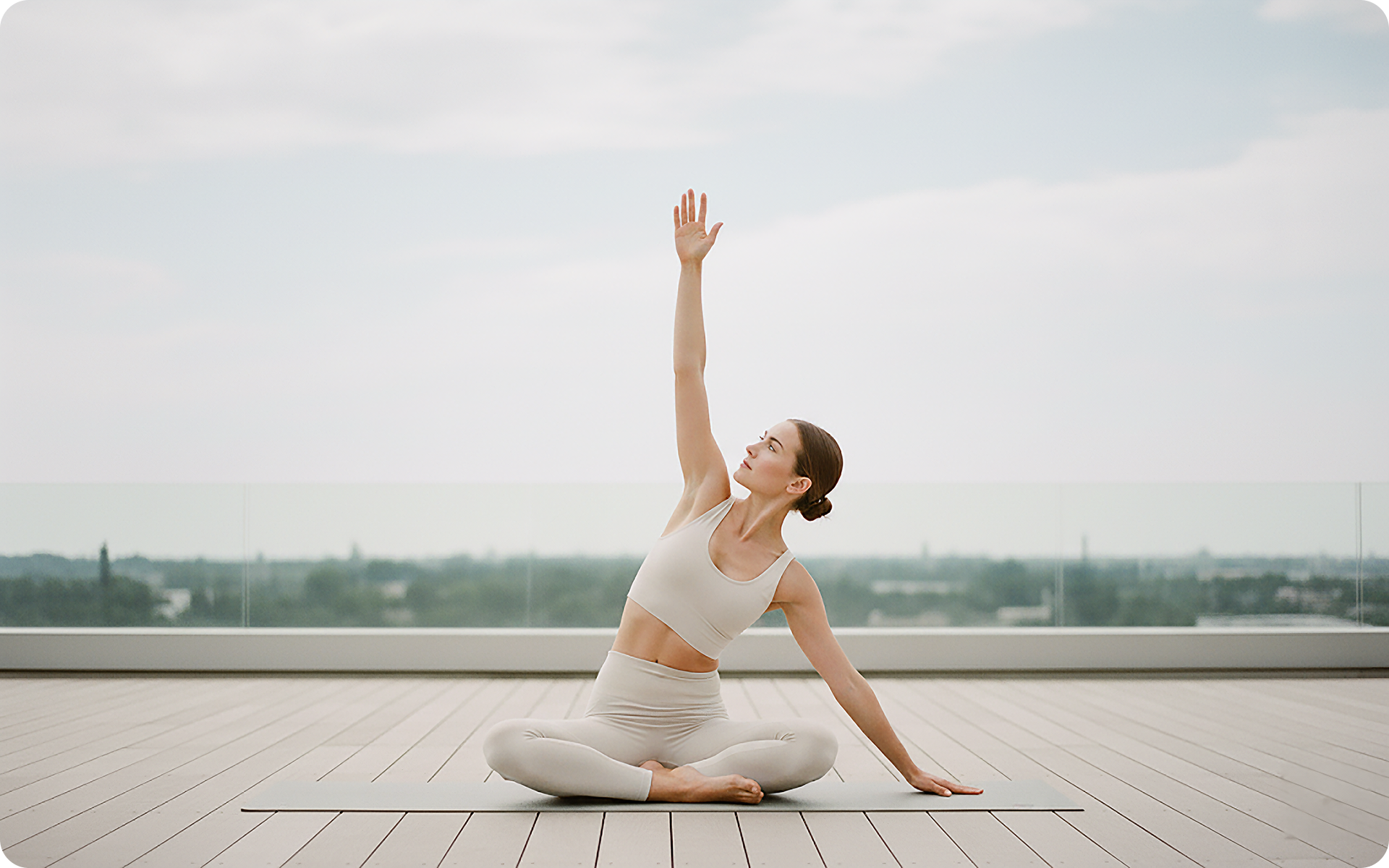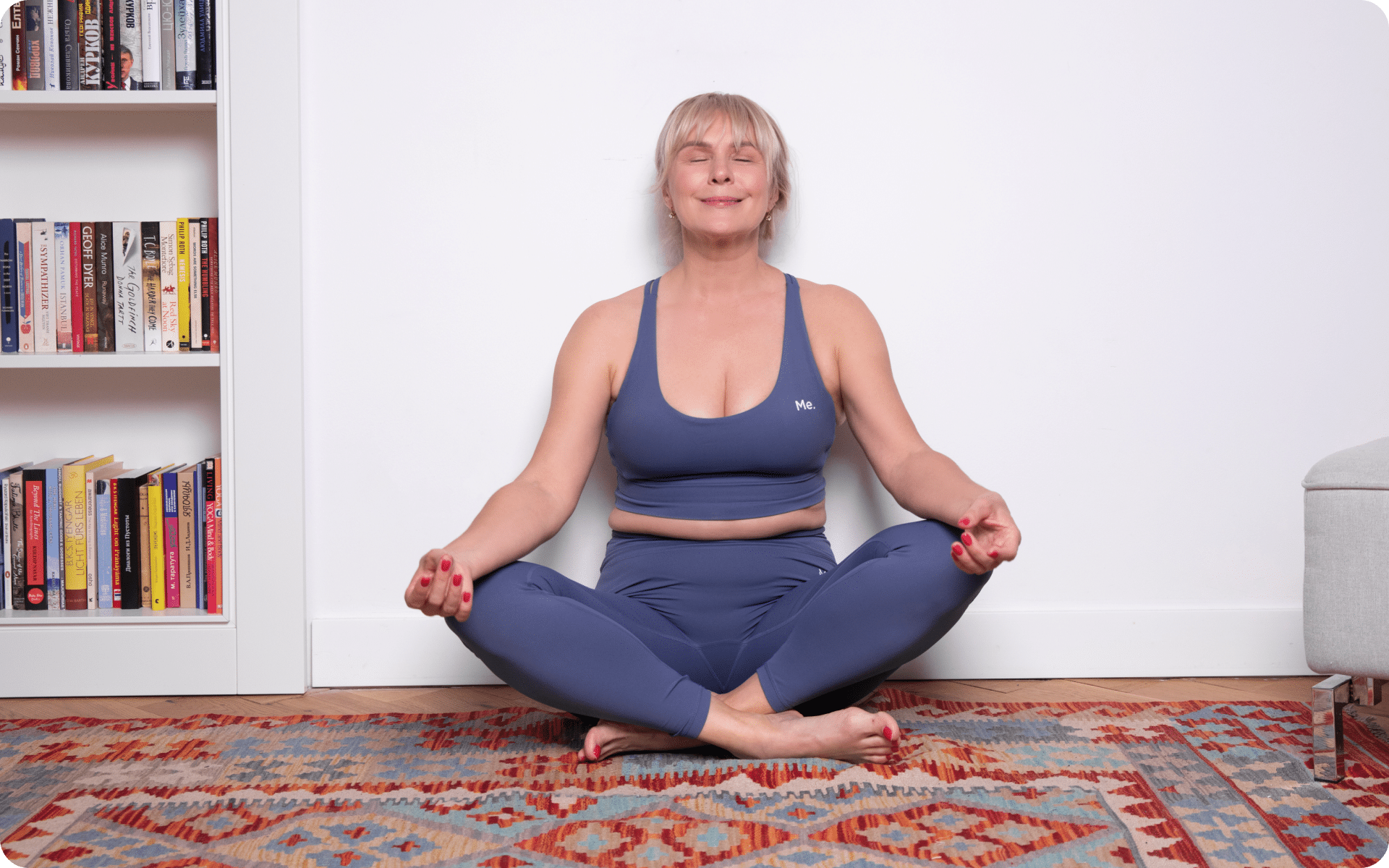Pilates is an excellent form of exercise for individuals over 50 years old. It focuses on low-impact movements that improve strength, flexibility, and balance.
However, traditional Pilates exercises may be too challenging for some older individuals who have limited mobility or pre-existing conditions. This is where wall Pilates comes in – it modifies classic Pilates moves by using a wall as support, which makes them safe and accessible for all ages.
If you’re over 50 and looking to incorporate Pilates into your fitness routine, here are five gentle exercises you can try using a wall, together with answers to your most commonly asked questions about wall Pilates.
What Is Wall Pilates for over 50-Year-Olds?
Wall Pilates is a modified version of traditional Pilates that uses a wall as a prop to add support and stability. This form of exercise is perfect for individuals over 50 years old, as it reduces the risk of injury while still providing the many benefits of Pilates.
Some people may be hesitant to try traditional Pilates due to concerns about balance or mobility limitations. Wall Pilates addresses these concerns by using the wall as a stabilizing force, which allows for safe and effective movement.
The origins of wall Pilates can be traced back to the work of Joseph Pilates, who developed contrology in the early 20th century. He believed proper alignment and control to be essential for a strong and healthy body. He also believed in using props and equipment to help with movement, which is why wall Pilates is a natural extension of his teachings.
Does Wall Pilates Work for People over 50?
Wall Pilates offers many benefits for individuals over 50, including:
- Improved balance and stability: As we age, our balance and stability can decline, which increases the risk of falls. Wall Pilates helps improve these areas by strengthening the core muscles that are responsible for maintaining balance (1).
- Increased flexibility: The regular practicing of wall Pilates can help improve flexibility in the body, reducing stiffness and promoting better range of motion in daily activities (2).
- Strengthened muscles: Wall Pilates exercises target all major muscle groups, which helps build strength throughout the body (2).
- Better posture: Poor posture is common among older adults and can lead to aches and pains. Wall Pilates helps correct imbalances in the body that contribute to poor posture, which can lead to improved alignment and reduced discomfort (1).
- Reduced stress: The slow, controlled movements in wall Pilates can be meditative and help reduce stress levels. This is particularly beneficial for older adults who may face increased stress due to health concerns or life changes (2).
- Low-impact exercise: Wall Pilates is gentle on the joints, which makes it a suitable form of exercise for those with joint pain or limitations (2).
Therefore, wall Pilates can greatly benefit individuals over 50 by improving their physical and mental well-being.
Whether you’re a workout beast or just a beginner making your first foray into the world of fitness and dieting – BetterMe has a lot to offer to both newbies and experts! Install the app and experience the versatility first-hand!
Is Wall Pilates Good for Menopause Belly Fat?
Creating a calorie deficit is the key to losing belly fat (3). Wall Pilates can be a helpful part of this process by increasing physical activity, which contributes to burning calories (4). Although it may not burn as many calories as high-intensity cardio, it’s better than being sedentary.
In addition, Pilates focuses on strengthening the core muscles, which can help improve posture and reduce the appearance of a “menopause belly”. This is because poor posture can cause the abdomen to protrude, giving the illusion of a larger stomach.
Menopause belly is tied to hormonal changes, particularly a decrease in estrogen levels. While wall Pilates may not directly address these hormonal changes, it can still be beneficial as part of an overall healthy lifestyle for the management of menopause symptoms (1).
It should be noted that spot reduction (targeting one specific area for fat loss) is not possible. Wall Pilates can contribute to overall weight loss and toning of the entire body.
Furthermore, for effective fat loss, it’s important to combine exercise with a balanced diet to achieve a calorie deficit. So while Wall Pilates can support your goals, it should be part of a broader lifestyle approach.
Read more: Wall Pilates For Women Over 60: Transform Your Health With Low-Impact Workouts
How Can I Reshape My Body after 50 with Wall Pilates?
To use wall Pilates to reshape your body after 50, it’s important to consistently incorporate it into your fitness routine. Here are some tips to get the most out of your wall Pilates practice:
- Start slow and listen to your body: As with any new exercise, you should start slowly and gradually increase the intensity as you become more comfortable. If a particular movement feels uncomfortable or causes you pain, modify or skip it.
- Focus on proper form and alignment: Pay attention to your instructor’s cues and focus on proper form and alignment in each movement. This will help maximize the effectiveness of the exercises.
- Be consistent: To see the best results, aim to practice wall Pilates at least 2-3 times per week. Consistency is the key to reshaping your body and improving strength and flexibility.
- Combine with other forms of exercise: While wall Pilates can be a standalone form of exercise, it’s also beneficial to incorporate other types of movement, such as cardio or strength training, into your routine.
- Eat a balanced diet: As previously mentioned, combining wall Pilates with a healthy diet is essential for overall body reshaping. You should focus on whole, nutritious foods and limit processed or high-calorie options.
By following these tips and staying committed to wall Pilates practice, you can successfully reshape your body after 50.
To get you started, here are 5 gentle yet effective wall Pilates exercises for people over 50:
Wall Roll Down
Muscles involved: Abdominals, spinal extensors, and hamstrings.
This classic Pilates exercise focuses on spinal articulation, core strength, and flexibility.
How to perform:
- Stand with your back lightly against the wall, feet hip-width apart and 6-8 inches away from the wall.
- Relax your shoulders and keep your arms hanging softly by your sides.
- Drop your chin toward your chest slowly, starting to roll your spine away from the wall one vertebra at a time.
- Keep your lower back and pelvis in contact with the wall as you roll down until your upper body slightly leans forward.
- Pause at the lowest point you can reach comfortably while maintaining control. Take a deep breath.
- Slowly reverse the movement, rolling your spine back up piece by piece until your head is fully upright again.
- Repeat 5-7 times, focusing on smooth and controlled motion.
Wall Spine Stretch
Muscles involved: Spinal erectors, abdominals, and hamstrings.
This exercise promotes spinal flexibility and posture improvement.
How to perform:
- Sit with your back lightly against the wall, your legs extended in front of you with a slight bend at the knees if needed for comfort.
- Lengthen your spine by imagining being lifted through the crown of your head.
- Extend your arms forward at shoulder height, palms facing down.
- Slowly nod your head and start to curl your upper body forward, reaching toward an imaginary point beyond your toes while keeping your back supported by the wall.
- Pause at your furthest comfortable reach, then take a deep breath.
- Slowly return to the starting position by stacking your spine upright, one vertebra at a time.
- Perform 5-7 repetitions, ensuring gentle and steady movements.
Wall Pelvic Tilt
Muscles involved: Abdominals and lower back stabilizers.
This simple yet effective exercise enhances pelvic stability and strengthens the core.
How to perform:
- Stand with your back pressed gently against the wall, your feet hip-width apart and 6-8 inches away from it.
- Engage your abdominals and, as you exhale, slowly tilt your pelvis to press your lower back firmly into the wall.
- Hold this position for a breath, focusing on keeping your shoulders and upper back relaxed.
- Release the tilt, returning to a neutral spine as you inhale.
- Repeat the movement for 8-10 controlled repetitions.
Wall Leg Lift
Muscles involved: Lower abdominals, hip flexors, and quadriceps.
This strengthens the lower core and improves balance gently.
How to perform:
- Stand tall with your back supported against the wall and feet hip-width apart.
- Engage your core and slowly lift one leg, bending at the knee to bring it up to hip height (or as high as comfortable).
- Hold the position for 2-3 seconds, keeping your body stable.
- Lower your leg carefully back to the ground without losing balance or rushing.
- Alternate legs, performing 8-10 repetitions on each side.
- Focus on controlled, smooth movements throughout the exercise.
Wall Arm Reach and Pull
Muscles involved: Abdominals, lats, and shoulder stabilizers.
This exercise improves shoulder mobility while engaging your core for stability.
How to perform:
- Stand with your upper and lower back pressed against the wall, your feet a few inches away, and your knees slightly bent.
- Raise your arms overhead in a controlled movement, keeping your rib cage grounded and avoiding arching your back.
- Slowly pull your arms back down so your hands return to your sides, imagining you’re moving through resistance such as water.
- Repeat the reach and pull for 8-10 repetitions, focusing on smooth and steady motion.
- Keep your shoulders relaxed and your neck tension-free throughout the exercise.
How Can I Flatten My Stomach with Wall Pilates for People over 50?
Flattening your stomach using wall Pilates requires a combination of targeted core exercises, disciplined form, and maintaining a calorie deficit. For individuals over 50, the focus should be on safe, effective movements and lifestyle adjustments to help reduce abdominal fat.
Perform Core-Strengthening Wall Pilates Exercises
Targeting your abdominal muscles through controlled and consistent movements is the key to building a stronger core and improving muscle tone in the stomach area (5). These exercises directly strengthen key abdominal muscles, supporting your goal of flattening the stomach.
Ensure Proper Form During Exercises
Maintaining proper form maximizes core engagement and prevents strain on your back or other joints. Follow these guidelines:
- Engage Your Core during every movement by pulling your navel in toward your spine.
- Move Slowly and Control Breathing, exhaling on effort and inhaling during relaxation phases.
- Avoid Overarching the Back, which can reduce the effectiveness of the exercises.
Consistent practice of precise movements will yield better results over time.
Maintain a Calorie Deficit
A calorie deficit is essential for reducing belly fat (3). As fat loss is achieved by expending more calories than consumed, Pilates should be one part of a broader effort.
Pair Wall Pilates with Cardio
While wall Pilates strengthens your core, engaging in additional calorie-burning activities such as brisk walking, swimming, or cycling helps create the necessary deficit. You should aim for at least 30 minutes of moderate cardio on most days to complement your Pilates routine.
Combine Exercises with a Balanced Diet
To sustain a calorie deficit:
- Focus on Whole Foods: Eat lean proteins, vegetables, fruits, whole grains, and healthy fats to keep you feeling full and energized.
- Reduce Empty Calories: Minimize your sugar, processed food, and alcohol intake.
- Control Portion Sizes: Track what you eat to ensure you’re not consuming more calories than you burn.
- Stay Hydrated: Drink plenty of water to reduce bloating and support digestion.
Stay Consistent
Commit to practicing wall Pilates at least 2-3 times a week while aligning your efforts with regular cardio and a healthy diet. Over time, this combination will create and maintain the calorie deficit required to lose fat and flatten your stomach.
Read more: Does Wall Pilates Really Work For Weight Loss?
How Long Does It Take for a 50-Year-Old to Get in Shape?
Getting in shape is a highly individual process and can vary greatly depending on several factors, including your current fitness level, health conditions, lifestyle, and the specific goals you have in mind. However, here are some general guidelines:
- Initial Improvements (4-6 weeks): Many people start to notice improvements in their energy levels, mood, and some physical changes within the first month of consistent exercise and healthy eating.
- Noticeable Changes (3-6 months): With regular exercise (at least 3-4 times a week) and a balanced diet, you can expect more noticeable changes in your strength, endurance, and body composition. This is when others might start to notice your progress too.
- Significant Fitness Gains (6-12 months): Achieving significant fitness goals, such as major weight loss, increased muscle mass, or improved athletic performance, typically takes at least six months to a year of dedicated effort.
Consistency, a balanced approach to exercise (including strength, cardio, and flexibility training), and a healthy diet are key. It’s also important to set realistic goals and be patient with the process, as sustainable changes take time. Consulting a fitness professional or healthcare provider can also help tailor a plan to your specific needs and ensure you’re on the right track.
Which Exercise Is Most Anti-Aging?
Engaging in daily physical activity, regardless of which type you choose, is one of the most effective ways to combat the effects of aging. Regular exercise helps maintain muscle mass, improve cardiovascular health, enhance flexibility, and boost mental well-being, all of which contribute to a more youthful body and mind (6).
When it comes to identifying the most “anti-aging” exercise, research often highlights the benefits of aerobic exercises, strength training, and flexibility exercises. A combination of all three, which is known as cross-training, may offer the most comprehensive anti-aging benefits.
You should aim for at least 150 minutes of moderate-intensity exercise or 75 minutes of vigorous exercise each week for maximum anti-aging benefits (7). The key is to find activities you enjoy and can sustain in the long term, which will ensure a balanced and active lifestyle.
- Aerobic Exercises
Aerobic exercises, such as brisk walking, running, cycling, and swimming, increase heart rate and oxygen intake. These activities improve cardiovascular health and brain function and can help delay age-related decline in cognitive abilities (8).
- Strength Training
Strength training, including weight lifting and other resistance exercises, is essential for maintaining muscle mass and bone density, both of which tend to decline with age. It helps prevent osteoporosis and sarcopenia (age-related muscle loss) and can improve metabolic health, which is vital for longevity (9).
Reasons why BetterMe is a safe bet: a wide range of calorie-blasting workouts, finger-licking recipes, 24/7 support, challenges that’ll keep you on your best game, and that just scratches the surface! Start using our app and watch the magic happen.
- Flexibility Exercises
Stretching exercises such as Pilates or yoga improve flexibility, mobility, and range of motion in joints. They can also help prevent injuries by keeping your muscles and tendons supple and resilient (10).
- High-Intensity Interval Training (HIIT)
Recent studies suggest that HIIT, which involves short bursts of intense exercise followed by rest, can have significant anti-aging benefits at the cellular level. It may improve mitochondrial function and increase the production of proteins that protect against cellular aging (11).
All forms of Pilates, including wall Pilates, have anti-aging benefits as they improve strength, flexibility, posture, and balance. However, wall Pilates is particularly supportive for older adults as it offers low-impact, joint-friendly exercises while effectively targeting the core muscles (1). There isn’t a single “number one” exercise for aging, but strength training consistently ranks highly. It helps preserve muscle mass, improve bone density, and support metabolic health (12). Combining this with aerobic activities and flexibility training such as Pilates creates the best anti-aging regimen. Squats promote muscle strength, improve posture, and enhance circulation, which can contribute to a more youthful appearance. They also support overall mobility and help prevent age-related declines in lower body strength. Yes, 20 minutes of wall Pilates daily can be effective for improving flexibility, core strength, and muscle definition. While it helps with overall fitness, pairing it with cardio or strength exercises can offer more comprehensive health benefits.Frequently Asked Questions
Which Pilates is anti-aging?
What is the number one exercise for aging?
Do squats make you look younger?
Is 20 minutes of wall Pilates a day enough?
The Bottom Line
Wall Pilates offers numerous benefits for individuals over 50 who are looking to strengthen their core and flatten their stomachs. By following proper form, combining exercises with a calorie deficit and healthy diet, and maintaining consistency, you can achieve your goal of a flatter stomach and improved overall health.
Remember to always listen to your body and modify or rest when necessary. Always consult a doctor before you start any new exercise routine.
DISCLAIMER:
This article is intended for general informational purposes only and does not serve to address individual circumstances. It is not a substitute for professional advice or help and should not be relied on for making any kind of decision-making. Any action taken as a direct or indirect result of the information in this article is entirely at your own risk and is your sole responsibility.
BetterMe, its content staff, and its medical advisors accept no responsibility for inaccuracies, errors, misstatements, inconsistencies, or omissions and specifically disclaim any liability, loss or risk, personal, professional or otherwise, which may be incurred as a consequence, directly or indirectly, of the use and/or application of any content.
You should always seek the advice of your physician or other qualified health provider with any questions you may have regarding a medical condition or your specific situation. Never disregard professional medical advice or delay seeking it because of BetterMe content. If you suspect or think you may have a medical emergency, call your doctor.
SOURCES:
- Effects of a Pilates exercise program on muscle strength, postural control and body composition: results from a pilot study in a group of post-menopausal women (2015, nih.gov)
- Effects of Pilates Training on Physiological and Psychological Health Parameters in Healthy Older Adults and in Older Adults With Clinical Conditions Over 55 Years: A Meta-Analytical Review (2021, frontiersin.org)
- Calorie Deficit: What To Know (2022, clevelandclinic.org)
- The effect of Pilates exercise on body composition in sedentary overweight and obese women (2017, nih.gov)
- A Comparison between Core Stability Exercises and Muscle Thickness Using Two Different Activation Maneuvers (2024, mdpi.com)
- Physical Activity and Healthy Aging (2020, nih.gov)
- Adult Activity: An Overview (2023, cdc.gov)
- Shorter term aerobic exercise improves brain, cognition, and cardiovascular fitness in aging (2013, frontiersin.org)
- Exercise and Nutrition Impact on Osteoporosis and Sarcopenia—The Incidence of Osteosarcopenia: A Narrative Review (2021, mdpi.com)
- Active Stretching Improves Flexibility, Joint Torque, and Functional Mobility in Older Women (2009, journals.lww.com)
- Effects of High-Intensity Interval Training on Melatonin Function and Cellular Lymphocyte Apoptosis in Sedentary Middle-Aged Men (2023, mdpi.com)
- Strength Training as a Countermeasure to Aging Muscle and Chronic Disease (2012, springer.com)
